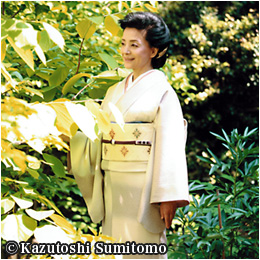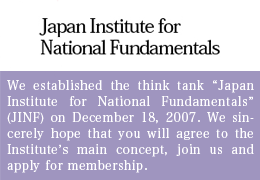How Should Japan Protect the Senkaku Islands from Possible Chinese Military Attack?
Violations by China of Japanese territorial waters off the Senkaku Island in the East China Sea appear to have become almost a daily affair as Chinese fighters conduct fly-overs in the sky and warships approach from the sea.
China’s intention to seize the Senkakus is obvious, but Japan will be hard pressed to defend them without ample preparations that do not allow for even the smallest error. To learn more about how the government intends to cope with this issue, I recently invited Professor Tomohide Murai of the Japan Defense Academy to appear on my weekly “Genron TV” news show – an hour-long internet television program I have hosted since last October.
During his appearance, Prof. Murai urged us to come to grips with the true implications of China being a nation “constantly trying to change the status quo of the international community.” While Japan and most of its neighbors in the Asia-Pacific have chosen to pursue the status quo as their fundamental national principle, Prof. Murai stressed that China alone has chosen to continue pursuing an aggressive military build-up, having already surpassed Japan in military power. He noted:
“When a nation prone to changing the status quo surpasses nations honoring the status quo in military power, that nation is in effect launching an attack on those nations, making the most of the opportunity to claim and solidify its new territory. In terms of commonly accepted military analysis, China definitely is a very serious threat to Japan. ”
On April 26, China officially announced it regards the Senkakus as a “core interest.” Then on May 28, the People’s Daily – the official organ of the Communist Party of China (CPC) – ran a monograph claiming that who has jurisdiction over Okinawa remains unresolved. It is obvious that China is clearly out to invade the Senkakus. Warns Prof. Murai:
“China watchers in Japan must be reminded that the perceived role of the military in China is totally different from Japan. After all, China is a nation where the CPC came to power by winning the revolutionary war. The military has a strong influence over politics in China, making it a military dictatorship per se. China has a propensity to ‘resolve problems by utilizing military power.’”
Deep-rooted among some quarters of Japanese political parties – including the incumbent Liberal Democratic Party (LDP), the Komeito (Clean Government Party), and the Democratic Socialist Party (DSP) – is an inclination towards seeking “a dialogue with China first.” However, not much can be expected of China’s willingness to “talk it over.”
“Democratic nations prioritize amicable discussions, regarding the use of military power as the last resort,” points out Prof. Murai. “However, when it comes to China, military measures are by no means the last resort after all other diplomatic and peace efforts have failed. The Chinese pursue all possible measures simultaneously, going on the offensive by selecting what they deem the most advantageous step.”
A “Small” War
Interpreting the Chinese frame of mind on the basis of The Art of War by Sun Tzu, it is generally believed that they are willing to resort to diplomacy only when they feel militarily inferior to their adversaries. If that is the case, Japan should expect to seek diplomatic solutions to conflicts with China only when she surpasses her in military strength. In other words, Japan must by all means strengthen her military.
We have seen this in the relations between China and the coastal nations of the South China Sea. China has made it a rule to constantly send warships into the seas off the Paracels, which once belonged to Vietnam. Chinese warships also show up on a regular basis in the seas around the Spratly Islands. All this because China absolutely overwhelms nations like Vietnam, the Philippines, and Indonesia in military power. Continued Prof. Murai:
“China stands ready to use military power without a moment of hesitation against its weaker adversaries. However, it knows it is not possible to apply military power to Japan. So, they will conduct diplomatic offensive. If they sense that is not working, they will move on to another strategy, trying to find Japan’s Achielles’ heel. That is why they are resorting to a fierce public opinion war.
China’s fundamental external strategy is conducted on three fronts – make up of three “wars” – ① a public opinion front, ② a psychological front, and ③ a legal front. With ①, China will attempt to induce strong anti-Japanese sentiments in domestic and international public opinion with the aim of gradually driving Japan into a corner; with ②, China will strive to bring the threat of its military strength to bear, hoping to break down Japan’s morale; and with ③, China will attempt to carry its point by utilizing the law extensively to its own advantage, interpreting its own peculiar laws in its own peculiar way.
“When it comes to a domestic public opinion war, the Chinese government is at a great advantage because, first and foremost, it is a dictatorship which orchestrates citizens’ demonstrations as it sees fit. They can shape public opinion in any way they like.”
In a conversation I had last January with Ms Cui Weiping, I learned from this prominent Beijing-based scholar and leader of China’s pro-democracy moment that the anti-Japanese demonstrations that raged across mainland China in September of 2012 were the fiercest she had ever encountered, but that they were “government-orchestrated…The CPC knew how to control those demonstrations.”
What, then, can China actually do to Japan in connection with the Senkaku Islands? Prof. Murai says it is certainly possible that Xi Jinping could incite a war against Japan as a means of protecting his own position if he were to see his approval ratings drop due to some domestic crisis. In such a case, Prof. Murai feels China would most likeky choose a “small” war, explaining:
“If it were a big war, the people of China could clearly discern whether their nation was winning or losing. On the other hand, if it was a war fought on a small scale, it most likely would not be fought to the bitter end, which would allow Chinese leaders to claim victory. A limited war fought some place too obscure for the general populace to recognize – such as a solitary island far off in the ocean – would be most ideal for the Chinese leadership.”
If, however, China attempted to wage a war in the Senkakus, adds Prof. Murai, it would have little chance of victory. For one thing, the Chinese armed forces have yet to have command of the air over the islands, and, for that matter, do not have the mastery of the seas either. As a result, Chinese troops would be unable to land there.
By contrast, some quarters express serious concern. In light of the present circumstances surrounding the Senkakus, Yoji Kohda, former Commander in Chief of the Self Defense Fleet, warns against forgetting the Makin Island raid of August 17-18, 1942. Here is the gist of what he wrote in Yomiuri Quarterly (No. 24, winter 2013 issue):
At that time, the Imperial Navy still had command of the air and waters in the whole of the central Pacific region despite its earlier loss in the Battle of Midway. Two US submarines carrying some 200 marines surfaced off the mid-Pacific island occupied by Japanese forces. The marines were launched in rubber boats, landed successfully, stamped out the Japanese garrison overnight, and quickly pulled out the following morning.
Needed: Military Build-Up to Discourage Adversary’s Build-Up
In the same way as the Japanese garrison on Makin Atoll was attacked by the US Marines, warns Kohda, the tiny islands of the Senkakus run the risk of being easily secured by special forces of the People’s Liberation Army (PLA) which can land by either parachuting down or advancing underwater from submarines.
Although Murai and Kohda do not necessarily agree on the future prospects of the situation involving the Senkakus, both point out the dire need to rectify the flaws in our laws and institutions constituting a serious deterrent to national defense, describing it as top priority.
The most important factor in the defense of the Senkakus, as well as other islands in our territorial waters, is to never allow Chinese troops to land. However, Ground Self Defense forces are not deployed in the Nansei Islands beyond the main island of Okinawa, making the expansive region a military vacuum. Kohda stresses the need to have Ground Self Defense forces stationed in major islands in the region, such as Yonaguni, Ishigaki, and Miyako, complete with a reinforcement mechanism, so that the vacuum can be filled swiftly. Also urgently required is construction of radar sites in the Nansei chain of islands in order to bolster reconnaissance capabilities for the entire region. Additionally, the chronic shortage of Self-Defense Force personnel, who are expected to perform these duties, must be made up for immediately.
The important thing is for Japan to implement a military build-up matching China’s, thereby demonstrating our determination to defend and protect all of the islands in our territorial waters. A demonstration of such a determination will itself constitute a powerful tool for our national defense. Observes Prof. Murai:
“General Secretary Xi Jinping frequently refers to ‘Chinese dreams.’ One such dream of Xi’s is to divide and rule the Pacific Ocean with the US. In order to see this dream of his come true, Xi must first start occupying islands in the first island chain in the adjoining seas. It is for this purpose that China has and will continue to build up militarily. It is Japan, which China has its eye on, that must implement a heavy military build-up in order to beat China’s. Military preparedness is the surest way to safeguard the Senkakus and avoid a military confrontation with China.”
Prof. Murai’s appeal appears to reflect the opinion of virtually every expert in Japan. I do not expect the US, our most important ally, to give us a helping hand in the defense of islands such as the Senkakus, unless we heed the experts’ voices with care and give concrete shape to our resolution.
(Translated from “Renaissance Japan” column no. 560 in the June 6, 2013 issue of The Weekly Shincho)








